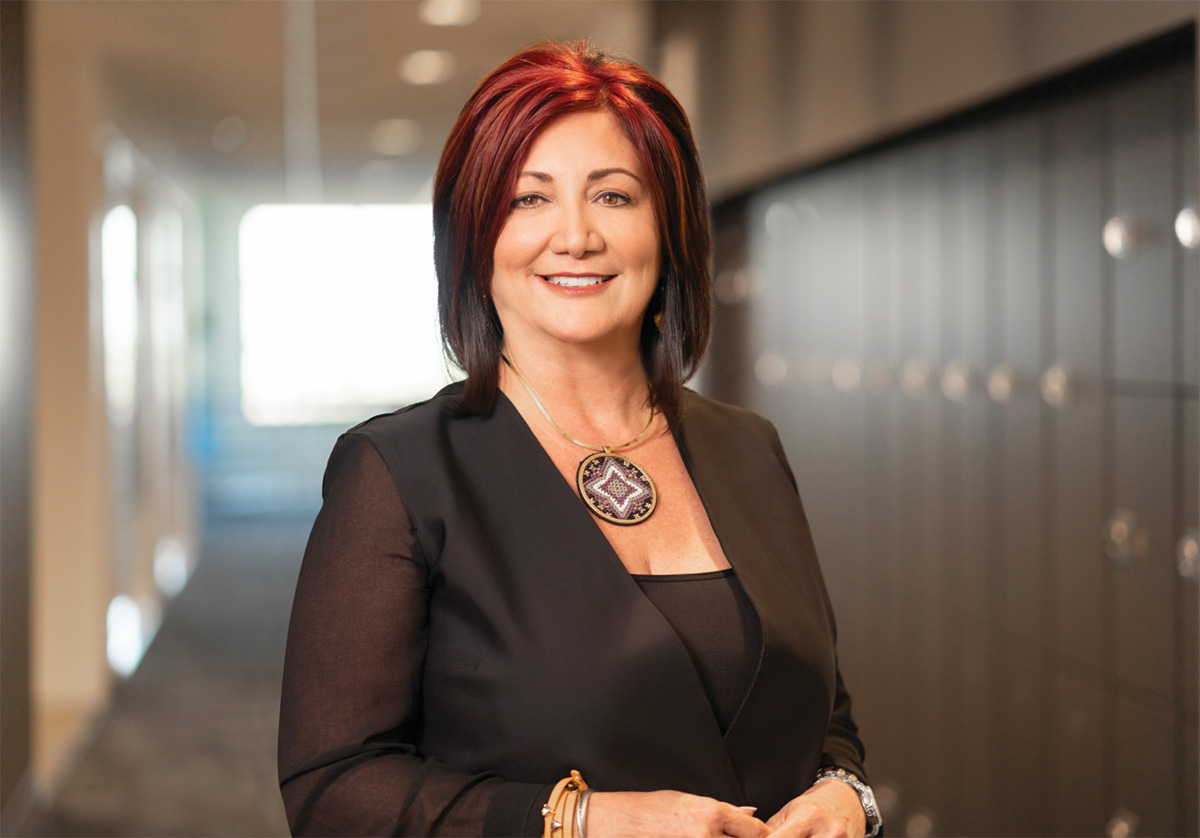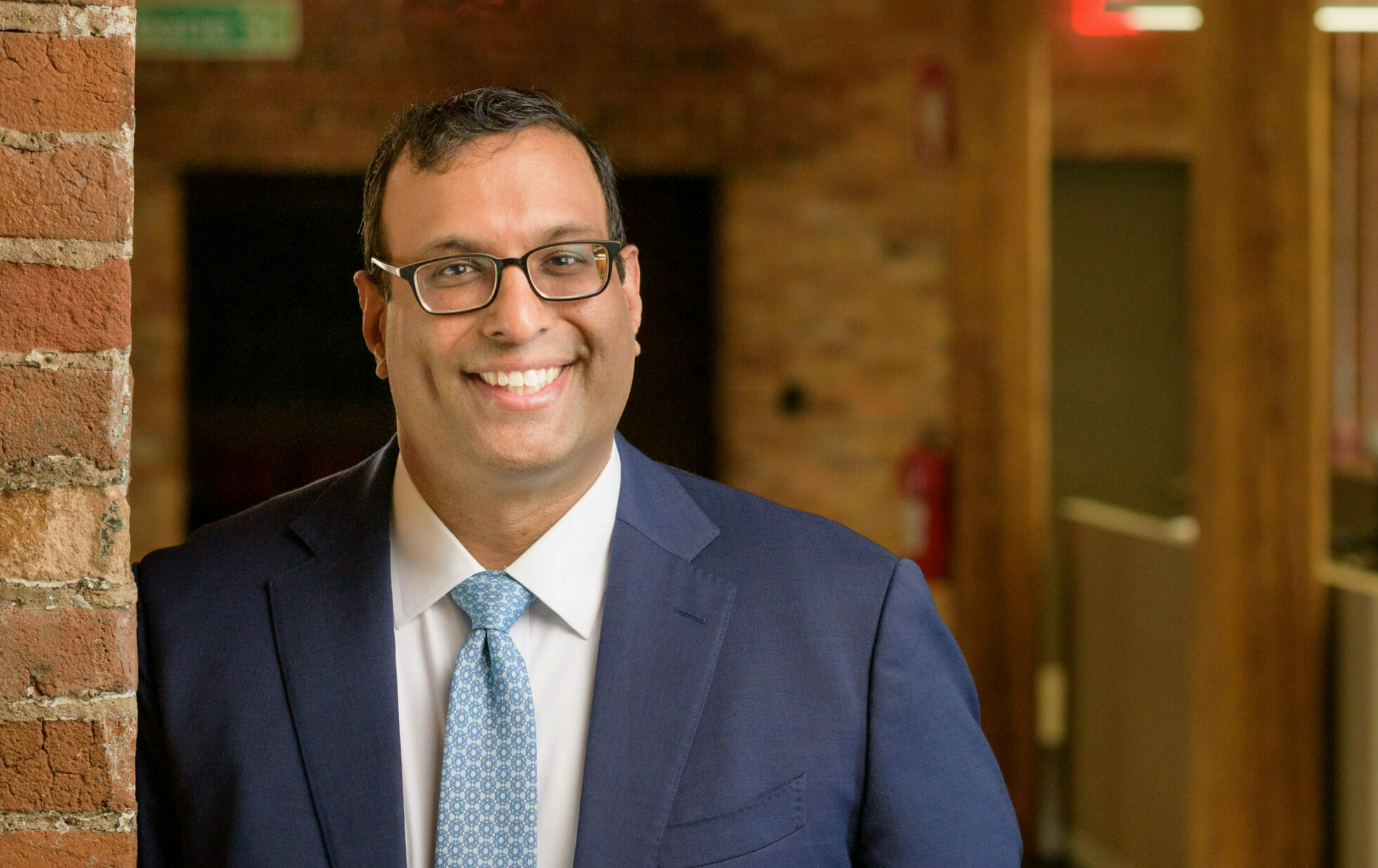Cisco’s Nina Lualdi serves – and shapes – the way humans live, work and play.
Much is spoken about transformational leadership, less is understood. Despite the critical need for transformational leaders to rally global business after a half-decade of extreme challenges, many leaders struggle to define transformational leadership. Fewer still can execute it.
A striking exception is Nina Lualdi, vice president of product readiness and business evolution at tech giant Cisco. Lualdi is nicknamed Superglue, such is her adaptability to a series of complex problems, and her ability to connect teams across this $50bn-revenue behemoth.
Managing an operation the size and scope of Cisco requires unimaginable levels of interconnectivity across the business. Lualdi terms it “horizontalization” – an effort that demands truly transformational leadership in a lateral space where hierarchies, incentives and reporting lines get re-imagined.
“To be a leader, you need followers – if there are no followers, there is no leader,” says Lualdi. “In a horizontal model, people don’t follow you because they report to you. You’re not in charge of their bonus. So, they are only going to follow you if they trust, respect and feel safe with you.”
The trap many leaders can fall into, says Lualdi, is the belief that transformational leadership is the rung above traditional, transactional leadership. “When you suddenly need to work horizontally, you can find yourself having to pull the switch on transformational leadership,” she says. “But there is a misnomer there: when we think about what transformational leadership means, we tend to think, ‘oh, that means I’m a high-level executive, and I’m delivering pretty strategic stuff,’ but that is not what it means. Rather, when you pull that switch, first and foremost is that the empathy within ourselves goes up a notch. The second thing that switch needs to do is make your self-awareness shift for the better. As much as you are looking outside and at the teams that you need to lead, you need to be introspective about who you are, and where you are in the journey of empathy and self-awareness.”
Unique experiences
The horizontal shift in leadership reflects a fundamental creative shift in the tech sector. The days of giants such as Cisco selling ‘products’ might be dwindling, or perhaps over. Success is built on building entire ecosystems that deliver unique experiences for customers.
“You are moving to a model that needs to support entire experiences, whole platforms and new business models,” says Lualdi. “All of a sudden, you find yourself with a company that needs to shift horizontally. So now when we develop a technology it’s not just engineering that goes into development. It’s the whole company that shifts into development. What we now need to take to market is not a product, nor a platform – it’s an experience.”

Lualdi has traced the sector’s metamorphosis from supplier of products to purveyor of holistic experiences. Her career took off as a support engineer at Olivetti in Italy, before moving to what is now Vodafone, via a professorship in Venezuela, where she’d earned her first degree in computer science years earlier. Her Strategic Program Management Certificate at Stanford signaled her transition from vertical to horizontal thinking and, by the late 2010s, she was unwaveringly looking across organizations rather than up and down them. Duke Corporate Education now works with her Cisco colleagues on the Adaptive Strategic Execution Program, designed to help project managers think and act more horizontally.
Cisco, like the other tech giants of its age, will require many transformational leaders working across the organization, from all of its parts. “We don’t have to invent it,” says Lualdi. “There has been lots of good research done on this in the past four or five years. But we do need to deeply understand it. We as leaders need to more clearly grasp the difference between transactional leadership and transformational leadership.” She rejects the notion that transformational leadership is only strategic: “There is no one-to-one correlation between transformational work and strategic work,” she says. “You can accomplish strategic and tactical work, and in both cases it may be essential to shift from transactional to transformational leadership styles in order to drive a successful business transformation.”
Leaders must be prepared to adapt, she says, by coupling a transformational, empathy-driven outlook with the nuts and bolts of transactional management – and pivoting naturally between the two. “We must learn to perform this smooth dance between transactional and transformational leadership,” she says. “Because even in the same effort, even within the same initiative, even within the same body of work, at one point there may be a need for us to go into transactional leadership and, at another point, move into transformational leadership mode.”
Lualdi considers this two-pronged approach to leadership as quasi-biological, a sort of inbuilt balance exemplified in nature. “I always go back to the human body,” she says. “The body has a system that allows itself to balance and rebalance. Because the body itself is designed to have the ability to sense things, essentially that is what you need to do in an organization. Transformation is an outcome of continuous evolution and it requires a whole-business version of the agile systems that we created years ago for software development. We need to find the equivalent of agile for whole companies. This is the next quest.”
Learning to let go
The free-flowing agile company demands transformative managers that can empathize and inspire, yet these rarefied qualities alone are insufficient. Transformation requires something more prosaic, yet equally exceptional: an ability and willingness to not just embrace, but to let go. “We cannot get attached to things,” says Lualdi. “We have to learn to let go easily. Even if the thing we are letting go of is something that we ourselves have built, that we ourselves have worked on for years. We must let them go when it’s time. You have to go the extremes of yourself, find a reason to let go of something.”
Letting go, pivoting, realigning for what’s next, is uncomfortable. Many companies grew up developing exceptional products, and within, there were many individuals that cut their teeth as product managers; many during that era remained with their organizations. How do they transfer and adapt their skills when their company is focused not on developing individual products, but solutions, platforms and experiences?
“The role of the product manager in the industry used to be market analysis, determining opportunities and customer needs,” says Lualdi. “Those needs informed product design, so that role ultimately attracted certain kinds of individuals – generally people who were engineers. They were analytical, plus they understood the technology. They liked to understand requirements and were very focused on needs and features.”
However, the big shift towards cloud-based ecosystems demanded a new type of product manager, Lualdi argues. “When you shift a business model, the product manager needs to become a leader – a transformational leader. They need to become a leader that manages a whole portfolio of teams that will deliver an experience for the customer. Sure, they need to analyse the market, but the result of that data analysis must go beyond a set of features for the customer – it must embody an entire experience, and that’s a completely different mindset.”
Lualdi likens the challenge to that of an interior designer. The customer thinks she has a clear idea of what she wants – a new kitchen and open family area, the loft extended, the hallway tiled – and the pieces that may fit. “But if you deal with a true professional the first thing they do is ask to see the whole house. Once they have seen the house they sit you down and say, ‘What do you do? What does your husband or wife do? How old are your kids? What do you do when you come home? How do you use the various areas? What makes you happy? What makes you sad?’ All the while, you are thinking, ‘What the heck is this? I just need to redo the kitchen!’ But that is the way they are trained, because the success of what interior designers do is not the physical spaces they deliver – their success is measured by the positive effect these spaces have, how it allows clients to feel about themselves and their lives when they utilize the home.”
It is this anthropological approach that makes Lualdi such a stand-out figure in the world of technology. She is the computer science major with a deep human touch. The Stanford strategist who talks about emotion and empathy. The leader who lets others lead.
“My daughter has just started in high school,” says Lualdi. “She came home one night and said, ‘You know what I discovered? I’ve found this thing that is the combination of human history and the actual scientific study of the human race, and the classes that I’m best at are history and science, so maybe that’s what I should study?”
Lualdi turned to her daughter and said, “You mean anthropology!”
It seems a talent for the subject runs in the family.




